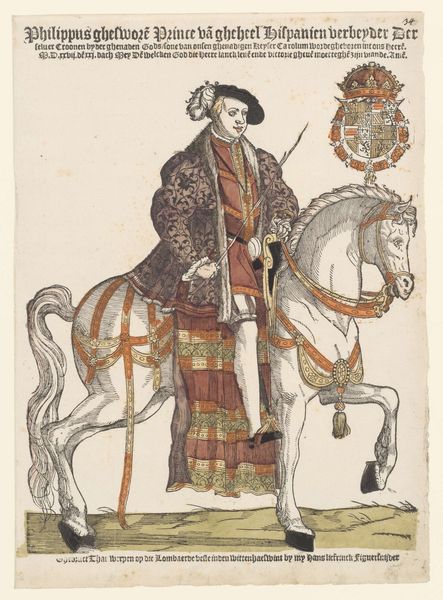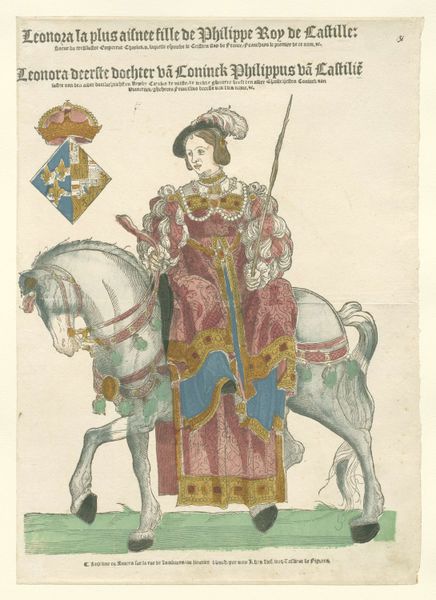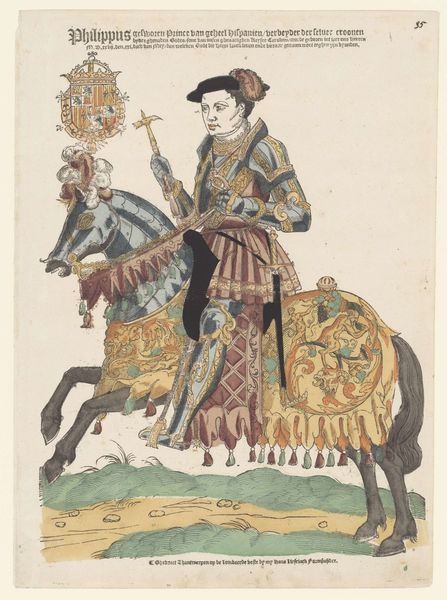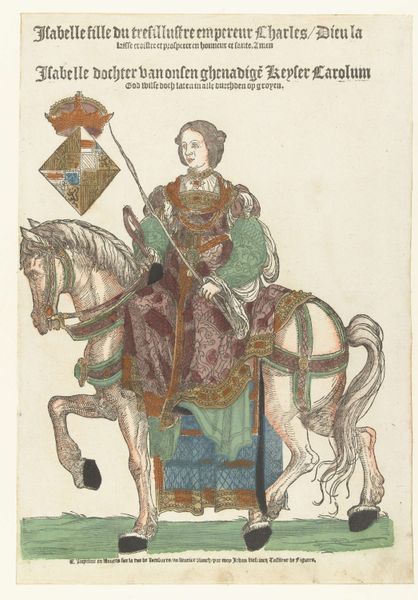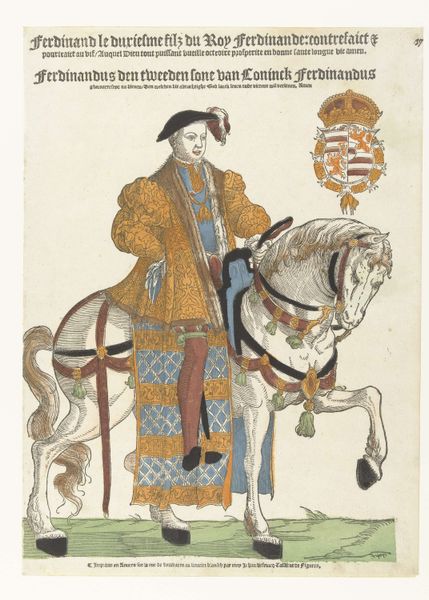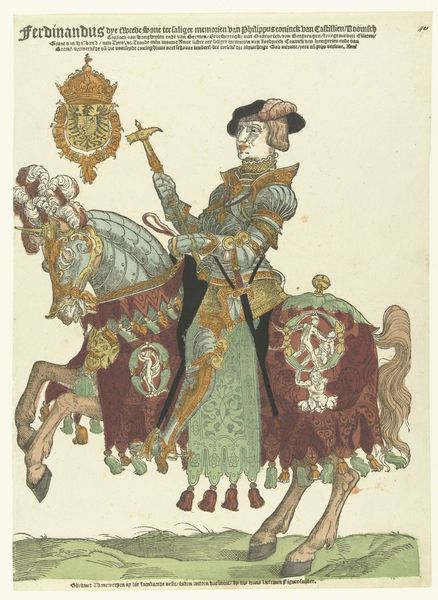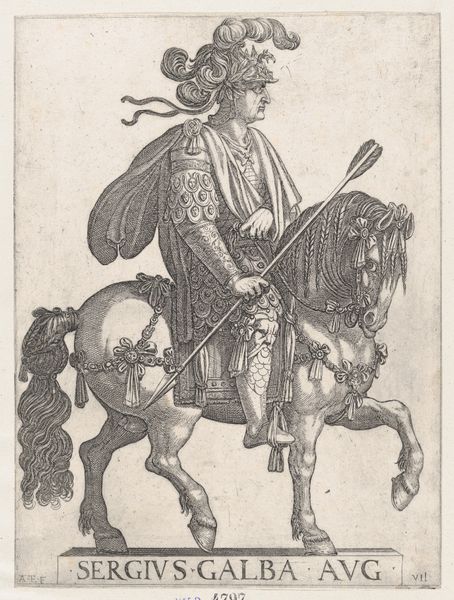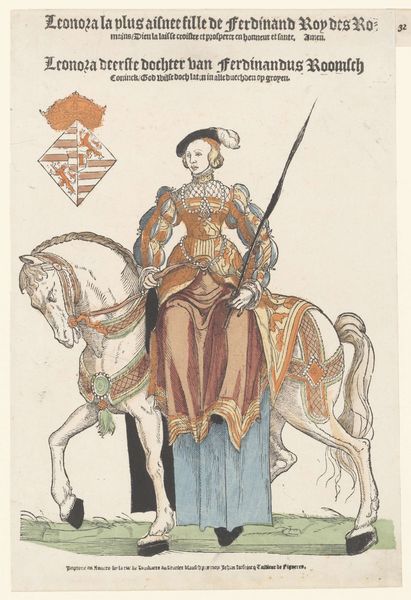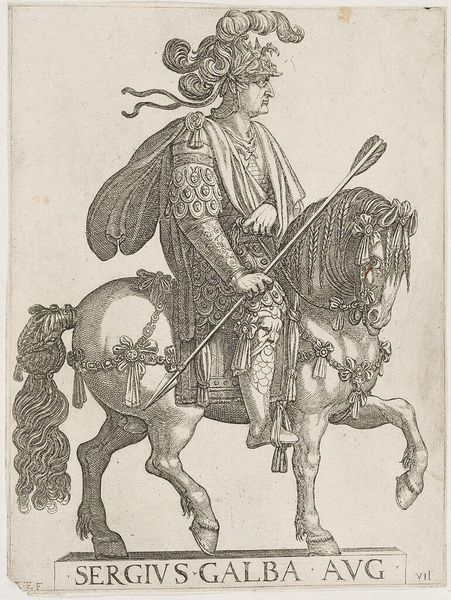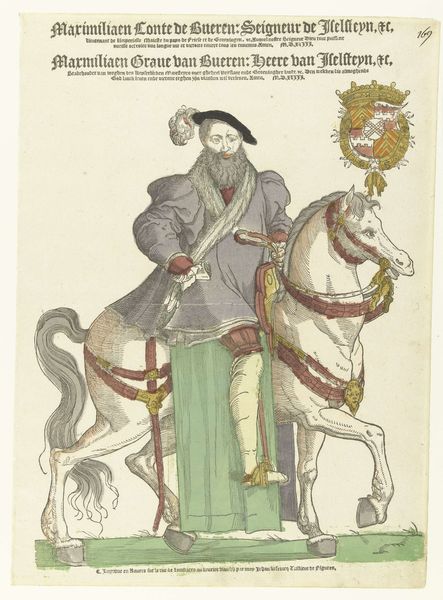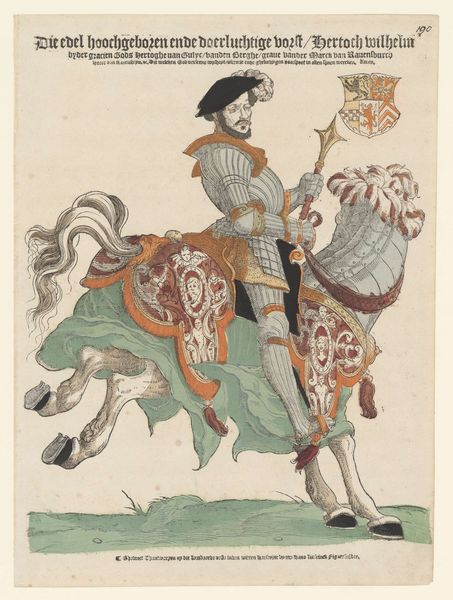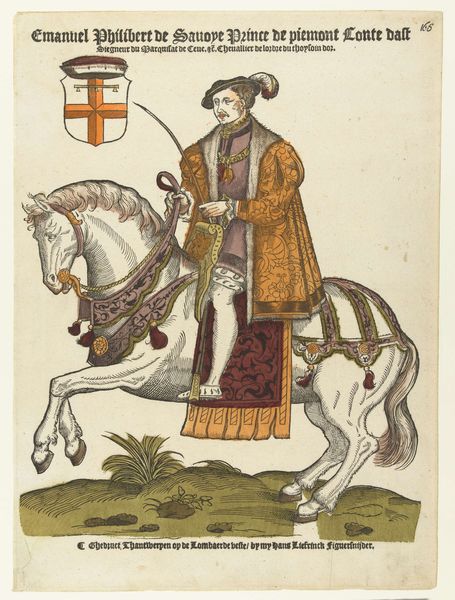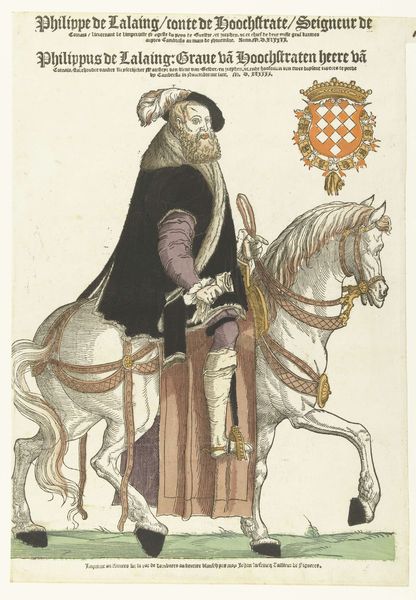
mixed-media, print, etching, engraving
#
portrait
#
mixed-media
# print
#
etching
#
figuration
#
11_renaissance
#
history-painting
#
northern-renaissance
#
engraving
Dimensions: height 406 mm, width 293 mm
Copyright: Rijks Museum: Open Domain
Editor: This is "Portret van Madame d'Etampes te paard," or Portrait of Madame d'Etampes on Horseback, created around 1538-1544 by Cornelis Anthonisz. It’s a mixed-media print – etching and engraving. I'm struck by how the detail of her clothing contrasts with the slightly stiff pose of both the woman and the horse. What catches your eye? Curator: Well, beyond the obvious portrait of a noblewoman, what's intriguing is how this image positions her within the complex socio-political landscape of the time. Consider the function of prints during the Renaissance. How were they used to disseminate power and influence? Editor: So, this wasn't just about capturing her likeness? Curator: Precisely. The medium of print made it possible to reproduce and distribute her image widely. We should ask: what does it mean to see a woman, Madame d'Etampes who was the mistress of Francis I, portrayed in such a commanding pose on a horse? Is this a deliberate statement of power, reflecting the shifting roles of women in the 16th century, or simply a fashionable display of status? Think about the institutions of power and how they would be represented to the public. Editor: It's like a carefully constructed image to project her influence. Almost like an early form of propaganda, maybe? Curator: In a way, yes. We could even consider it a visual assertion of her political and cultural capital. Editor: I hadn't considered that. So much more than just a portrait. Curator: Indeed! Examining the print within its historical context illuminates how art can actively participate in shaping public perception and solidifying social hierarchies. Editor: I'll never look at a portrait the same way again. Thanks!
Comments
No comments
Be the first to comment and join the conversation on the ultimate creative platform.
